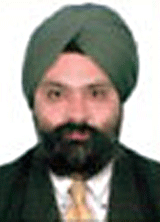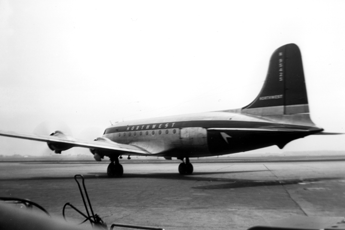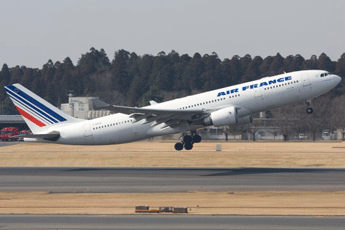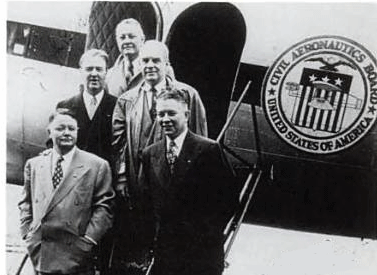Jade Hooks Up With AUA Cargo
 Shenzhen-based Jade Cargo International has signed an agreement for future
intensive collaboration with Austrian carrier AUA.
Shenzhen-based Jade Cargo International has signed an agreement for future
intensive collaboration with Austrian carrier AUA.
This includes air freight transports as
well as representative functions by AUA Cargo on behalf of Jade in Austria
and the neighboring Eastern European markets.
“Austrian Airlines Cargo is a nearly
perfect partner for us since they offer an extensive network to and from
Eastern Europe, the CIS countries, as well as Russia. In addition they
are a high profile quality carrier known for reliable and efficient transport,“
lauds Jade’s CEO Captain Kay Kratky of his newest ally.
 Austrian’s head of cargo, Franz Zoechbauer (left) calls attention
to his carrier’s dense network and road feeder services to and from
Vienna to major places between Poland and Kazakhstan.
Austrian’s head of cargo, Franz Zoechbauer (left) calls attention
to his carrier’s dense network and road feeder services to and from
Vienna to major places between Poland and Kazakhstan.
“We presently serve more than 40
destinations in Central and Eastern Europe, most of them for quite a number
of years.”
According to the pact Jade intends to deploy
four flights weekly with jumbo long range equipment B747-400ERF via Vienna
Airport en route from South Korea and China to Frankfurt, then Amsterdam.
These services are due to commence soon
with no exact date inked yet.
“By landing at Vienna Schwechat Airport
and due to our upcoming partnership with Lufthansa group member AUA Cargo,
the Austrian capital will become sort of a sub-hub for us,” comments
Kratky.
There, AUA Cargo will be responsible for
transporting and handling of all transit shipments.
They will be either flown in the cargo
compartments of their passenger fleet or trucked to places such as Prague,
Budapest and Warsaw.
Pallets and containers that are bound for
the Ukraine will be transported on board a B737-300SF that AUA Cargo operates
between Vienna and Kiev five times a week in cooperation with local partner
Ukraine International Airlines
Further to the AUA agreement Jade has appointed
Air Logistics Group (ALG) as new general sales agent for Western and Central
Europe, including Turkey and Israel.
The GSA that won an international tender
launched by Jade has offices in 24 countries. ALG belongs to France-based
World Freight Company (WFC).
The contract is based on the performance
of ALG.
“The more tonnage they acquire and
load on board of our aircraft the more money they will make,” says
Kratky.
His partnering with a GSA is a consequence
of Lufthansa Cargo’s decision to stop utilizing three of the six
B747-400ERFs Jade possesses and lay the marketing and sales responsibilities
for the capacity of the three freighters entirely on Jade’s shoulders.
This is a consequence of Lufthansa Cargo’s
grounding some of their own MD-11 freighters due to the economic downturn.
Under these awkward circumstances it obviously
would not have been appropriate to be responsible for filling the entire
capacities of a six B747-400ERF of an affiliated carrier.
This explains why LH Cargo has terminated
the marketing agreement for three of Jade’s jumbo freighters for
the time being.
As a consequence of this shift of responsibility,
Kratky and his crew decided to team up with a GSA to sell the capacity
of those three aircraft.
“The contract we have signed with
ALG last week compliments and broadens our previous business strategy
and opens up new doors for additional market opportunities,” Mr.
Kratky said.
Due to special pro rate agreements (PRAs)
Lufthansa Cargo will be able to further utilize the capacity of the three
aircraft if needed.
Heiner Siegmund
Future
Views For India Cargo
There is good news out of
India.
Reports are circulating that the March
quarter is “turning out to be the best in the last five quarters
for Indian firms” in terms of net profit.
In addition, financial experts have started
pointing out that inflation had come down drastically and sales had stabilized
thereby improving the profitability of firms.
Witness some recent figures from the air
cargo sector.
According to figures from the Airports
Authority of India (AAI), domestic freight traffic, which had fallen around
11 percent in February 2009, saw the number decreasing to only around
2.4 percent.
That, however, does not mean that the industry
is out of the woods.
Figures indicate that international and
domestic freight handled by the country’s airports went down by
4.5 percent to around 1.5 lakh tonnes in March 2009, compared to the freight
handled in March ’08.
As for exports and imports, international
freight traffic registered a decrease of 5.5 percent during March 2009.
It is in this backdrop that those in the
air cargo business or even remotely connected to it have started showing
their optimism.
The hope stems from the strength of the
Congress-led newly reelected government led by Dr. Manmohan Singh.
Freight forwarders, airlines and almost
everyone associated with the cargo industry in the country feels that
Prime Minister Singh, a strong advocate of the open market will push through
development on a much bigger scale than what was seen in his previous
tenure.
Given the prevailing situation, stakeholders
from the airfreight industry are looking up to the government to come
out with a slew of measures that will not only boost trade but also ensure
the economic growth of the country.
 Commenting on the new government, Shesh Kulkarni, (left) President of
UTi Worldwide, and a prominent member of the Bangalore Air Cargo Club
(BACC), told ACNFT:
Commenting on the new government, Shesh Kulkarni, (left) President of
UTi Worldwide, and a prominent member of the Bangalore Air Cargo Club
(BACC), told ACNFT:
“Having Dr. Manmohan Singh as Prime
Minister is a very positive indicator for the industry and for the economy
as a whole.”
Taking up the cause of the logistics industry,
Kulkarni pointed out:
“One can expect that with the clear
mandate, the Prime Minister would continue to initiate the same game-changing
initiatives to further the prospects of this country.
“One is curious to see what specific
plans this government would draw to support, improve, accelerate growth
in the logistics industry.”
 Kulkarni also mentioned “it had been heartening to hear Aviation
Minister Praful Patel talk about cargo at many forums when he was in the
previous government.”
Kulkarni also mentioned “it had been heartening to hear Aviation
Minister Praful Patel talk about cargo at many forums when he was in the
previous government.”
Today, “with significant initiatives
in the area of privatization of airports and ports, it is only imperative
that these moves are complimented by a strong vibrant logistics ministry.”
Vipul Jain, CEO and Managing Director,
Kale Consultants Ltd., a leading solutions provider to the global airline,
logistics and travel industry said its Technology Survey for Indian Logistics
Industry-2008, forecast that the Indian logistics industry was set to
grow at a CAGR of 11 percent to reach levels of Rs 4,100 billion by 2013.
 “Technology is expected to be a key
enabler to support the logistics sector in its growth. Kale's survey also
reveals that the current market for IT solutions in this sector is estimated
at Rs 400 crores and set to grow to a level of Rs 1,000 crores by 2012-13
(growing at CAGR of 20-22 percent).”
“Technology is expected to be a key
enabler to support the logistics sector in its growth. Kale's survey also
reveals that the current market for IT solutions in this sector is estimated
at Rs 400 crores and set to grow to a level of Rs 1,000 crores by 2012-13
(growing at CAGR of 20-22 percent).”
Jain went on to elaborate that “the
government should ensure that the privatization and development programs
undertaken in the country are on track. These moves will boost investments
made in information technology by the logistics sector.”
He cautioned that while “the growth
story of the air cargo industry has been considerable,” there were
issues that needed to be addressed urgently.
For one, he said, “challenges exist
both within organizations as well as across the industry.”
Stakeholders in the airfreight industry
are expecting things to happen.
A number of them have prepared a wish list
for Praful Patel, the new Minister for Civil Aviation and the government.
 Said freight forwarding veteran Pukhraj Chug, (right) Managing Director,
Group Concorde, which handles cargo for a large number of international
airlines as well as Capt Gopinath’s Deccan 360, “The government
must have the time to concentrate on core issues like development of infrastructure
to help develop the air cargo industry to its full potential.”
Said freight forwarding veteran Pukhraj Chug, (right) Managing Director,
Group Concorde, which handles cargo for a large number of international
airlines as well as Capt Gopinath’s Deccan 360, “The government
must have the time to concentrate on core issues like development of infrastructure
to help develop the air cargo industry to its full potential.”
 Commented senior Air Cargo Agents Association of India (ACAAI) member
J Krishnan (left):
Commented senior Air Cargo Agents Association of India (ACAAI) member
J Krishnan (left):
“The new government has committed
itself to spruce up the infrastructure.”
To begin with, he said “an umbrella
ministry for infrastructure, with a capable and senior minister, would
be a step in the right direction.”
Krishnan also pointed out that the new
government should foster and encourage the “role of regulators.”
That would be ideal “for private
capital to flow in and also usher in transparency of pricing.”
ACNFT also met (below left) Nirmal
Sandhu, President of the Bangalore Air Cargo Club.
He was more concerned about the facilities
available at Bengaluru – considering the fact that the much-hyped
private airport has not lived up to its expectations – the city
where he operates.
“The new government must provide
more facilities and better quality at the Bengaluru International Airport,
so that customers can be serviced in a better fashion which will benefit
us.
“That will also bring in more revenue
for every one concerned.
“Above all,” said Sandhu, “the
cargo fraternity is looking for industry status.”
  Most air cargo stakeholders that ACNFT spoke to said that while
the Indian government had taken the initiative to improve the existing
infrastructure at a number of airports as far as passengers were concerned,
the cargo section had not received similar attention.
Most air cargo stakeholders that ACNFT spoke to said that while
the Indian government had taken the initiative to improve the existing
infrastructure at a number of airports as far as passengers were concerned,
the cargo section had not received similar attention.
As a result, Indian shippers had been suffering,
both in terms of increased time and money.
“Today,” said Shesh Kulkarni,
“the cost of imports per kg from countries like Germany, UK and
elsewhere from Europe ranges between Rs 18 to Rs 20 per kg (roughly half
a dollar).
Similarly, if India were to export to the
same destinations, our cost works out to Rs.45+ (almost a dollar), which
is almost double.
“This makes the value of the goods
for the Indian shipper that much more expensive, particularly when one
is competing in the global market.”
Tulsi Nowlakha Mirchandaney, (right) Managing
Director, Blue Dart Aviation, mentioned that till the government took
a decision to implement the new ground handling policy, things would not
improve.
Incidentally, the new policy seeks to bring
about a whole set of new people to do the job.
Tulsi reasoned:
“Air cargo is very different from
air express operations.
“The Blue Dart business model is
based on an integrated, seamless service of a very high quality and processed
within a short time window.
“Any intervention that would fragment
the process would destroy the service offering and render it uncompetitive.”
She made it clear that her company did not “see the rationale of
having to start fresh with new, inexperienced people who our employees
would have to train, only to have themselves replaced by them.
“The ground handling agencies’
investments in assets are expected to be leveraged over the smaller number
of freighter aircraft operating in the India market, evident from the
enormous difference in costs between the domestic passenger and cargo
operators.
“Apart from being unfair, the move
would add between 13.3 percent to 16.8 percent to our direct operating
costs.”
Tirthankar Ghosh

Emirates Group Mercator has recently
become just one of a handful of businesses in the U.A.E. to receive
a Level 3 Capability Maturity Model Integration (CMMI).
Patrick Naef, President, Mercator,
said: “Mercator’s ability to consistently deliver high
quality IT projects on time, within agreed budgets and tailored
to the needs of our customers is at the heart of our operation.
“This is an achievement of which
every single team member can be proud - passion for quality is a
way of life within Mercator.
“But it does not end there –
we as a team have now set CMMI Level 3 as the minimum acceptable
benchmark for ourselves and over the months and years to come we
will strive to achieve the highest rating - CMMI Level 5.” |
A
Hardy Christian Deal

During last month’s
Transport Logistic 2009 in Munich, Brussels Airlines Cargo and Lufthansa
Cargo Charter, the independent subsidiary of Lufthansa Cargo AG,
signed an agreement for the global sales of cargo charters.
Now as you read this, the sales team
of Brussels Airlines Cargo represents the Lufthansa Cargo Charter
Agency.
Lufthansa Cargo Charter with their
Competence Centers in Kelsterbach, Hong Kong, Chicago and Dubai
has been successfully relying on the global sales force of Lufthansa
Cargo AG from the very beginning.
In March 2006 Swiss World Cargo joined
as a competent sales partner and in March 2009 Austrian Airlines
Cargo became a member of the team.
Christian Fink (left in photo above),
Managing Director of Lufthansa Cargo Charter Agency noted:
“With Brussels Airlines Cargo
as our new partner, Lufthansa Cargo Charter has extended its reach
even further.
“Brussels Airlines Cargo is
extremely strong in a still growing African market and will support
Lufthansa Cargo Charter in that area.
“All the partnerships we have
built compliment each other with their strengths in different markets
and industries.
“With this new partnership Brussels
Airlines Cargo is expanding its product portfolio with tailor-made
transport solutions.
“Now there are hardly any restrictions
to our product.
“Another important sales tool
underlining our commitment and dedication in finding solutions for
our customers has been added to our offering,” Guy Hardy (right
in photo above), Head of Cargo Sales at Brussels Airlines Cargo
smiled.
|
AF 447 &
The Unexplained
 |
 |
The disappearance earlier
this month of Air France flight 447 with 228 people aboard the flight
including 3 pilots and 9 other cabin crew harkens echoes from the past
as loss turns to wonder of what happened that brought tragedy to so many
aboard that ill-fated airliner.
Now as human remains and debris are
being picked up from the crash scene and a French nuclear sub is speeding
to the South Atlantic, hope is that the aircraft’s black boxes having
settled almost two miles underneath the ocean north of Brazil, might be
eventually be recovered and cast further light on the worst air disaster
since 2001.
What is known is that the doomed airliner
entered a fearsome area of severe thunderstorms and turbulence, and then
mysteriously disappeared from radar screens.
Deadlines came and passed at the airline’s
destination control center. As minutes turned into hours, emergency armadas
of military aircraft and vessels were dispatched to find the missing plane
and its passengers.
Another breaking news report about
Air France 447?
No, in fact the past couple of sentences
were written nearly 60 years ago and are echoes from an eerily similar
story about lost Northwest Flight 2501 in 1950!
Also in June (1950), the Northwest
DC4 left LaGuardia on a warm pleasant evening.
Carrying maximum takeoff weight, 55
passengers and 3 crew, the transcontinental flight was bound for Seattle
with an en-route stop planned in Minneapolis.
Cruising at 3,500 feet over Lake Michigan,
near Benton Harbor Michigan, Captain Robert Lind encountered a line of
electrical storms and quickly asked permission to reduce altitude to 2,500
feet.
The Civil Aviation Authority could
not grant the request due to congestion in the area.
That was the last transmission received
from Northwest Flight 2501.
Near South Haven, Michigan, a retired
navy commander witnessed “a terrific flash” over Lake Michigan.
And at least four residents of tiny
Glenn, Michigan were loitering in their cars at the town’s gas station
at 12:15 a.m. when they heard an aircraft sputtering overhead.
One of the bystanders retorted: "Bring
that plane down here buddy. We'll fix it up for you!"
Mr. Danny Thompson testified that
the plane's engines sounded "like a stock car with a blown head gasket.”
Then Mrs. William Bowie saw a “queer
flash.”
“It was a funny light. It looked
like the sun when it goes down.
“It only lasted a second then
was gone,” she said."
In the Air France mystery, two pilots
from an Air Comet flight from Lima, on a similar path, reported an ‘intense
flash’ in the sky.
The early investigations into the
Northwest 2501 disappearance indicated a midair explosion.
Two days into the Air France search,
Brazilian authorities confidently reported finding a 7 meter section of
the fuselage, buoys and seats, belonging to the stricken aircraft.
In the Lake Michigan crash, local
fisherman pulled up a small piece of it over to the Coast Guard.
Divers were dispatched to a site that
was bubbling oil and covered with bits of paper.
They found nothing but rocks. In both
cases, the debris had no connection to the lost aircraft.
The Northwest 2501 crash was the biggest
disaster in civilian aviation at the time.
The Air France 447 catastrophe would
be the largest loss of life in a decade.
The Northwest 2501 incident is a mystery
that has confounded searchers for over six decades.
After an exhaustive investigation,
the Civil Aeronautics Board labeled the cause of the crash as ‘Unknown’.
Despite the massive proportions of the Northwest aircraft, weighing 71,000
pounds, wings spanning 117 feet and four engines weighing 1,600 pounds
each—no significant pieces of the wreckage have ever been found!
Even the renowned author and shipwreck
hunter Clive Cussler joined the fray in May 2006.
He has discovered more than 80 shipwrecks
around the world.
Cussler funded an advanced technology
search, scanning Lake Michigan at a depth of 200 feet, near Benton Harbor,
Michigan.
To this day, his search has come up
empty and the saga continues. The Lake Michigan crash, inexorably changed
the history of Northwest Airlines.

He moved from crash investigator to top executive at Northwest Airlines.
Here is the U.S. Civil Aeronautics Board (CAB) in 1951:
Second (clockwise from top) is Donald W. Nyrop who served as CAB Chairman.
Shortly after this picture was taken Donald W. Nyrop took the reins of
NWA and led the carrier for 24 years during a time that the airline in
addition to becoming great, also pioneered weather avoidance technologies.
It was the second in an astonishing
chain of 6 fatal accidents between 1950 and 1952.
By spring 1952, the carrier had crashed
20 percent of its fleet of Martin 202s and its pilots were scared to fly
the plane (let alone the traveling public!).
At that critical moment, the head
of the Civil Aeronautics Board, Donald W. Nyrop stepped in to conduct
a top to bottom safety review of the Martin 202, Northwest’s pilot
training and maintenance.
His comprehensive list of 63 corrective
measures so impressed Northwest’s board of directors, that they
began a relentless pursuit to hire Nyrop. The effort was successful, culminating
in his appointment as President and CEO in 1954.
Thus began a 24-year reign that saw
Nyrop among other things lift Northwest from the edge of insolvency and
despair, to new heights of profitability and preeminence in the history
of aviation.
Nyrop was a pioneer of aviation safety,
opening one of the industry’s first Meteorology departments.
In an ironic twist, Northwest Meteorology
was widely admired for its work in turbulence and storm avoidance. It
created a ground-breaking system called Turbulence Plot (TP) in 1965 that
linked directly into civil and military radar systems, and delivered storm
and turbulence information into the cockpit in just 8 minutes.
It charted out “do not fly”
zones that other carriers regularly flew right into. For many years, Northwest
touted Turbulence Plot as the safest thunderstorm and turbulence system
in the industry.
So the story comes full circle.
The mysterious disappearance of Northwest
2501 led to a full-blown safety investigation and the lucky recruitment
of industry titan, Donald Nyrop to Northwest.
Even Clive Cussler couldn’t
find the wreckage of Northwest 2501, but the twist is that Mr. Nyrop solved
many of the tragic questions about the crash.
His innovative Meteorology Department
and their TP system were used well into the 21st century.
Now we can only wonder if in some
manner beyond our time will history repeat itself?
Will Air France 447 start a chain
reaction for the carrier and spur renewed scientific research about the
dangers of storms and turbulence?
Nothing is written of where the AF
tragedy will move people.
But history has proven an event as
saddening and mysterious as Air France 447 will not go quiet before some
answers and action are taken that will lessen possibilities for a repeat
some time in the future.
Tony Randgaard
(Tony Randgaard is Continental Airlines director of cargo marketing
based in Houston Texas).
|



